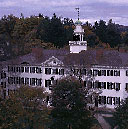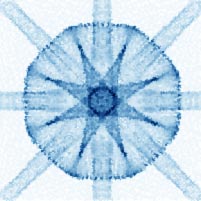
Table of Contents
Home Page
Sponsors
Contact Information
Committees
Important Dates
Plenary Speakers
Invited Speakers
Scientific Program
Social Program
Registration Form
Registration Fees
Venue
Travelling
Accommodations
Campus Map
Paper Submissions
About the Logo
Orozco Murals
Department of Physics and Astronomy
Dartmouth Molecular Materials Group

Manuscript Preparations[pdf version] |

|
The instructions for manuscript preparation are given below. All manuscripts will be refereed. The original and two copies of the manuscript, together with the length calculation form should be submitted to:
Phonons 2001 - Manuscript,
Department of Physics and Astronomy,
HB6127,
Dartmouth College,
Hanover, NH 03755, USA.
Please remember to include 3 or 4 Keywords, which will be quoted in the Subject Index of the Proceedings. Leave the paper number on the length calculation form blank.
The receipt deadline is 16 July 2001. If it is necessary to revise your manuscript, please send an original and two copies of the revised version to the above address by 1 October 2001. Clearly mark one copy with the revisions made.
In addition to the hard copies you should provide your manuscript and figures electronically on a 3.5-inch, MS-DOS formatted, floppy disk (see instructions below). The figures should be in PostScript, Word, tiff, or gif format. The disks will be sent directly to the publishers who will not accept electronic manuscripts in any other form. Because of the publisher's requirements, we cannot accept manuscripts submitted by email.
Use the form below to calculate the manuscript length and adhere to the following page limits:
Plenary papers: 9 published pagesInvited papers: 6 published pages
Contributed papers (both oral and poster): 3 published pages.
Please avoid the use of color figures and artwork since these are very expensive to reproduce.
HOW TO PREPARE A MANUSCRIPT FOR ELSEVIER PROCEEDINGS
|
|
provided with a scale bar within the figure and their top edge should be indicated. All details (lettering, plotted symbols) should have proportionate dimensions so as not to become illegible or unclear after reduction; in general the figures should be half the size of a typewritten page and also should be designed for reduction to one-column width (7.5 cm). Avoid small open symbols which tend to fill in upon reduction. The size of the lettering should be no less than 1.5 mm after reduction. Please check carefully for spelling mistakes and consistency with the main text. Wherever feasible, compile individual graphs with identical axis values and analogous captions into a single figure. All figures should be identified on the back by their number, the name of the first author and the reference number of the conference, if known. The numbering should be in the order in which they are referred to in the text. Finally, the figure captions should not be put under the figures but rather listed together on a separate sheet, preceded by `Fig. 1.' etc.
[2] J. Jackle, in: Amorphous Solids: Low-Temperature Properties, ed. W.A. Philips (Springer, Berlin, 1981) pp. 135B160. All references should be cited in the text. THE ELECTRONIC VERSION OF THE MANUSCRIPT should be submitted together with the final accepted paper copy. It is the responsibility of the author to ensure that the version on disk exactly matches that on paper. Any of the well-known word processors may be used. The preferred storage medium is a standard 3.5 inch disk that has been formatted with MS-DOS. Please, format EQUATIONS as Equations and not as figure boxes! The text should be prepared in the same way as described above. The name and version of the word-processing program, the title, the first author's name and the conference code (for reference) should be clearly indicated both on the disk label and checklist. CHECKLIST (1) The length of the manuscript may not exceed the conference limit (see the length calculation form). (2) The manuscript should be double-spaced throughout. (3) Number all pages consecutively. (4) Give full postal address of the corresponding author plus Fax and E-mail nos. and 3 or 4 keywords on the first page. (5) Give references complete and in Journal style. (6) Supply only first-quality original figures / photographs. (7) Put the figure captions in a list on a separate sheet. (8) Indicate type / version of the word processor on the disk. (9) Fill out the enclosed Length Calculation Form correctly and completely. (10) Submit three copies of the paper, together with one set of original figures / photographs, a disk with the electronic version of the manuscript (8) and the filled out form (9). |
LENGTH CALCULATION FORM
2 x 48 lines per column = 96 lines per page
| Manuscript item |
Lines used m |
Characters per line a) n |
Multiplier c |
Printed lines b) m x n x c |
| Title |

|

|
1/16 |

|
| Author names |

|

|
1/16 |

|
| Addresses (one per line) |

|

|
1/54 |

|
| Abstract |

|

|
1/54 |

|
| Keywords |

|

|
1/54 |

|
| Mandatory standard (blank) lines on first page | 38 | |||
| Total lines first page | 38 | |||
| Main text, page 2 |

|

|
1/48 |

|
| Main text, page 3 |

|

|
1/48 |

|
| Main text, page 4 |

|

|
1/48 |

|
| Main text, page 5 |

|

|
1/48 |

|

|

|

|

|

|
| Two extra lines for each displayed equation | Number of displayed equations x 2 = |

|
||
| Two extra lines per section heading | Number of section headings x 2 = |

|
||
| References |

|

|
1/54 |

|
| Total lines of main text and references |

|
|||
| Caption Table 1 |

|

|
1/54 |

|
| Table 1 |

|
54 | 1/54 c) |

|
| Caption Table 2 |

|

|
1/54 |

|
| Table 2 |

|
54 | 1/54 c) |

|

|

|

|

|

|
| Mandatory 5 lines per table | Number of tables x 5 = |

|
||
| Total table lines | ||||
| Figure captions |

|

|
1/54 |

|
| Figures | Height h (cm) | Reduction r d) | Multiplier c | h x r x c |
| Fig. 1 |

|

|
2.35 c) |

|
| Fig. 2 |

|

|
2.35 c) |

|
| Fig. 3 |

|

|
2.35 c) |

|
| Fig. 4 |

|

|
2.35 c) |

|

|

|

|

|

|
| Mandatory 2 lines per figure | Number of figures x 2 = |

|
||
| Total figure lines |

|
|||
| Total manuscript length = Total number of lines / 96 |

|
|||
a) Including spaces.
b) Round to nearest larger integer.
c) Double the multiplier in case the table or figure covers two printed text columns.
d) Choose smallest reduction factor r (e.g. r=0.35) while retaining legibility of lettering and symbols (and obeying the 7.5 cm maximum width).
Last update:
 Mail comments, corrections, or suggestions to
phonons@mac.dartmouth.edu.
Mail comments, corrections, or suggestions to
phonons@mac.dartmouth.edu.